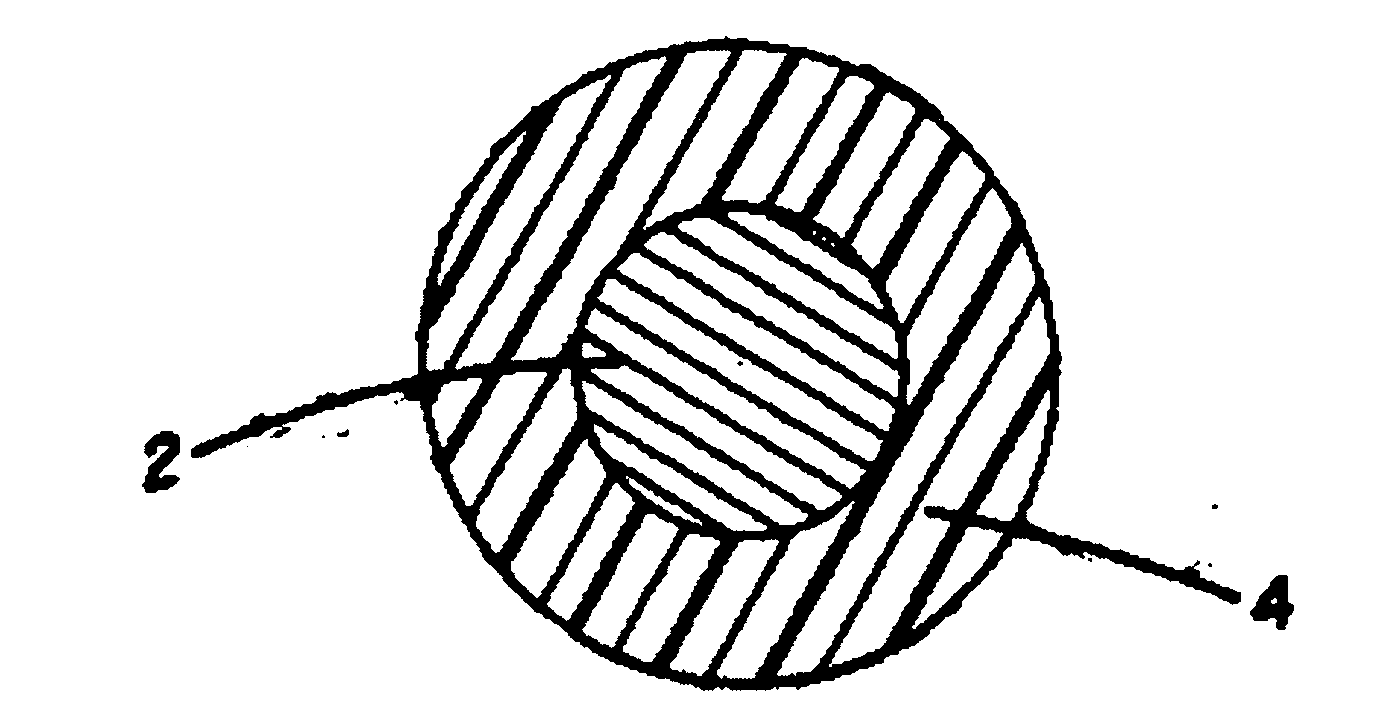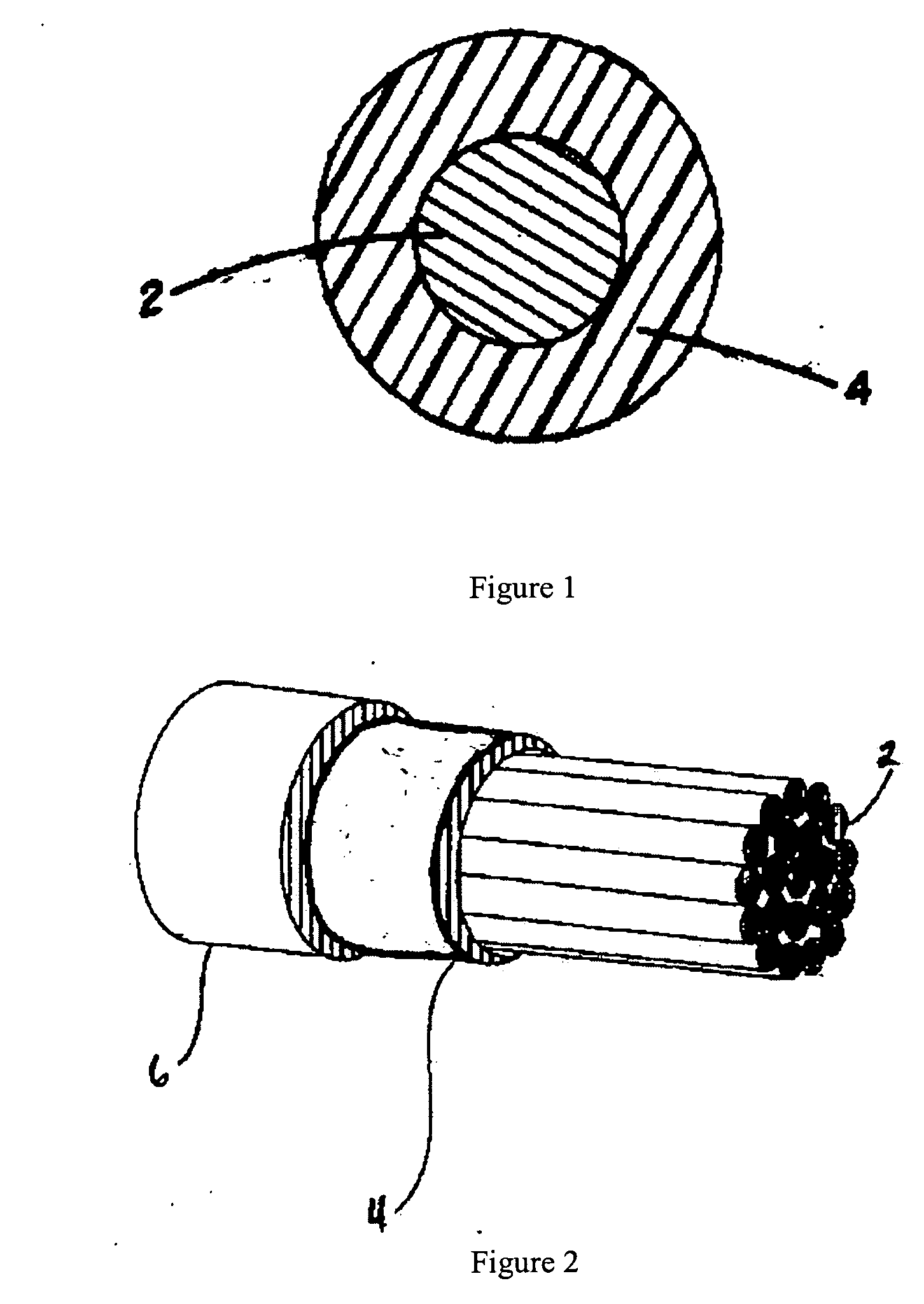Flame retardant electrical wire
a technology of electrical wires and flame retardants, applied in the direction of insulated conductors, plastic/resin/waxes insulators, insulated cables, etc., can solve the problems of failure prematurely, failure to sustain success, cracking of insulation layers in thermoplastic polyester insulated electrical wires, etc., and achieve the effect of large surface area
- Summary
- Abstract
- Description
- Claims
- Application Information
AI Technical Summary
Benefits of technology
Problems solved by technology
Method used
Image
Examples
examples
[0097] The following examples were prepared using the materials listed in Table 1.
TABLE 1ComponentDescriptionPPEA poly(2,6-dimethylphenylene ether) with anintrinsic viscosity of 0.46 dl / g as measured inchloroform at 25° C. commercially available fromGeneral Electric under the grade name PPO646.KG1650A polyphenylethylene-poly(ethylene / butylene)-polyphenylethylene block copolymer having aphenylethylene content of 30 weight percent, basedon the total weight of the block copolymer andcommercially available from KRATON Polymers underthe grade name G 1650.PPA polypropylene having a melt flow rate of 1.5 g / 10min determined according to ASTM D1238 asdescribed above and commercially available under thetradename D-105-C Sunoco Chemicals.HDPEA high density polyethylene having a melt flow rateof 0.8 g / 10 min determined according to ASTM D1238 asdescribed above and commercially available fromMitsui Chemicals under the tradename HI-ZEX 5305E.TuftecA polyphenylethylene-poly(ethylene / butylene)-H1...
examples 1-7
[0098] Examples 1-7 were made by combining the components in a twin screw extruder. The PPE and block copolymers were added at the feedthroat and the PP was added downstream. The BPADP was added by a liquid injector in the second half of the extruder. The material was filtered in melt and pelletized at the end of the extruder and the pelletized material was injected molded into test specimens for flexural modulus, heat deflection temperature, and melt flow index testing.
[0099] Flexural modulus (FM) was determined using ASTM D790-03 at a speed of 1.27 millimeters per minute and is expressed in kilograms per square centimeter (kg / cm2). The values given are the average of three samples. The samples for flexural modulus were formed using an injection pressure of 600-700 kilograms-force per square centimeter and a hold time of 15 to 20 seconds on a Plastar Ti-80G2 from Toyo Machinery & Metal co. LTD. The remaining molding conditions are shown in Table 2.
[0100] Heat distortion temperatu...
PUM
| Property | Measurement | Unit |
|---|---|---|
| sizes | aaaaa | aaaaa |
| thickness | aaaaa | aaaaa |
| particle size | aaaaa | aaaaa |
Abstract
Description
Claims
Application Information
 Login to View More
Login to View More - R&D
- Intellectual Property
- Life Sciences
- Materials
- Tech Scout
- Unparalleled Data Quality
- Higher Quality Content
- 60% Fewer Hallucinations
Browse by: Latest US Patents, China's latest patents, Technical Efficacy Thesaurus, Application Domain, Technology Topic, Popular Technical Reports.
© 2025 PatSnap. All rights reserved.Legal|Privacy policy|Modern Slavery Act Transparency Statement|Sitemap|About US| Contact US: help@patsnap.com



